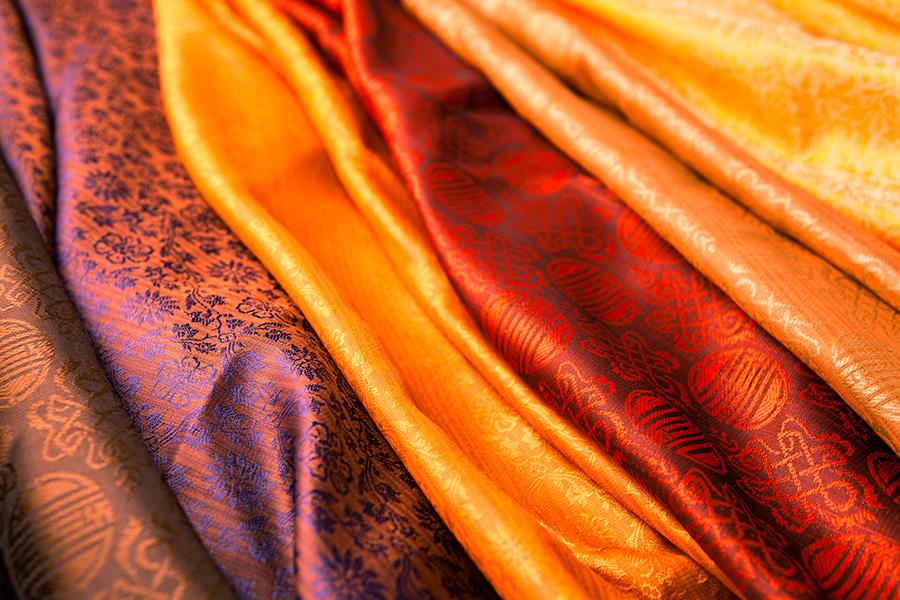Five ways for Indian textiles to get a bigger global market share
India’s exports have shrunk by about 3 percent over the past five years, as importers move towards countries like Vietnam, Ethiopia and Indonesia. Riding the wave of global sentiment for de-linking supply chains from China, Indian players need to create a differentiated value proposition, focussing on quality rather than quantity
As the world’s fifth-largest exporter of textiles spanning apparel, home and technical products, India is a key player in the global textile landscape—contributing about 8 percent of the world’s trillion-dollar business-to-business (B2B) market. However, China is miles ahead of India in terms of exports, with a 31 percent share in global exports, while India has just 4 percent share.
India’s exports have shrunk by about 3 percent over the past five years, driven by declining cost competitiveness vis-à-vis low cost manufacturing locations, higher cost of capital, longer lead times and lack of innovation. Importers have been moving toward cheaper sources of textiles including Vietnam, Indonesia and Ethiopia.
Amid COVID-19, a “new normal” has been unravelling as consumers shift toward casual wear and place more emphasis on sustainability and traceability. COVID-19 has also set in motion the redistribution of global trade shares, the recalibration of buying patterns amid the rise of e-commerce, and a demand for more control over value chains. Overall, the pandemic has pushed out the growth trajectory of India’s textile market by two to three years.
Given these market swings and the growing sentiment for de-risking supply chains from China, now is the time to double down. Five moves can help India’s textile companies win a bigger share of the world market:
Build agile supply chains
India can play its hand at building flexible processes based on shortened lead times and asset-light business models. The former will require a manufacturing process redesign, inventory planning and platforming, geographical clustering of suppliers, and upskilling labour. The latter can be achieved by making outsourcing decisions based on in-house talent, logistics efficiency, and the ability to tap into innovative ecosystems of manufacturers and suppliers.
Create the right product–geography mix
Indian players should target the right product mix for each geography by evaluating local consumption markets, overall import base, growth potential, and India and China’s relative performance in export volumes and growth. For example, India can focus on exporting knitwear to Western Europe and woven wear to the United States and United Kingdom.
Reset costs
Indian players will need to build a significant cost advantage over China by “variabilising” costs by restructuring manpower and maintenance contracts and exploring shared fixed asset resources across organisations. Furthermore, it will be crucial to increase the yield for manufacturing and subsequently reduce waste. Last but not the least, companies will need to enhance procurement efficiencies, especially in procurement of commodity raw materials, by leveraging specification optimisation, cost unbundling and index-driven inter-vendor price optimisation. These moves can enable a 10 to 15 percent cost-takeout for manufacturers.
Embrace digitalisation and automation, from planning to sales
Although India’s textiles industry is behind the curve on automation, the time is ripe to adopt digitalisation across the entire value chain. Planning must take advantage of AI-enabled analytics to sharply the design collections. Manufacturing should explore a variety of solution, such as IoT-based real-time performance monitoring, predictive maintenance, robotic process automation admin operations, and automatic guiding vehicles for moving materials. Sales and customer engagement should explore AI-based predictive lead scoring, smart B2B sales management tools for generating and managing leads and digital showrooms, virtual 3D sampling, and participation on digital B2B platforms for customer engagement and transactions.
Anchor on sustainability
To differentiate from China and attract global retailers and customers as they look to diversify away from China, Indian players should pivot their sales and marketing campaigns around sustainability. With product authenticity and traceability becoming key differentiators, it is important to invest in advanced tracking solutions for real-time order updates across the value chain as well as in robust state-of-the-art traceability solutions that help prove a product’s origin.
Riding the wave of global sentiment for de-linking supply chains from China, Indian players need to create a differentiated value proposition, focus on quality rather than quantity, have more functional and innovative designs, and ensure sustainability and traceability along the value chain. Currently, India has low competitiveness in the high volume-low value addition parts of the market given high interest rates and a more challenging industrial relations environment. Hence, higher value addition, higher service level and wider customisation requirements, but smaller volume businesses, are more suited for India to gain share in. The focus on such market segments will help India regain its share of the global textile market, propelling the country to become the second-largest exporter behind China over the next four to five years.
Authors: Neelesh Hundekari, Partner, Kearney; Siddharth Jain, Partner, Kearney and Karan Dhall, Principal, Kearney
The thoughts and opinions shared here are of the author.
Check out our end of season subscription discounts with a Moneycontrol pro subscription absolutely free. Use code EOSO2021. Click here for details.
